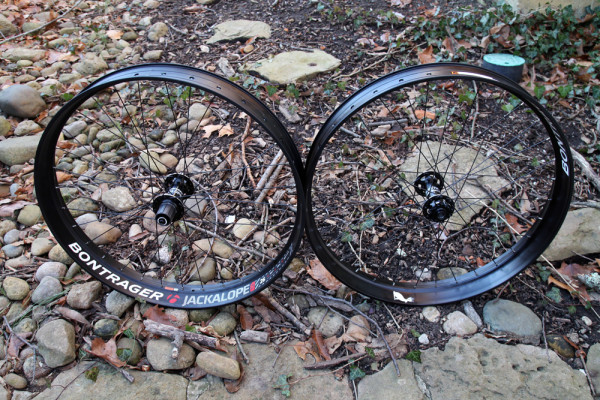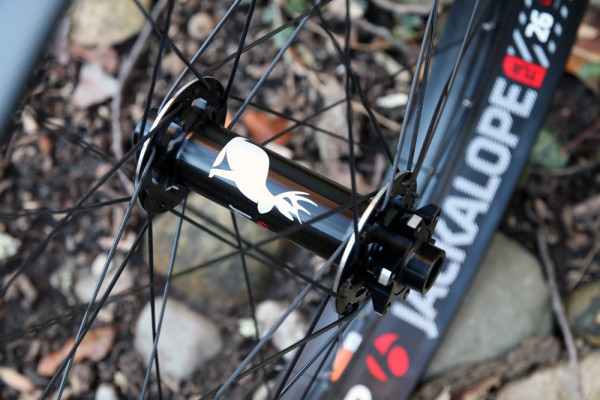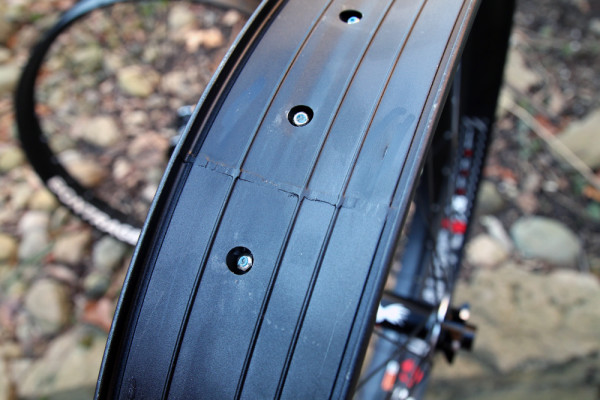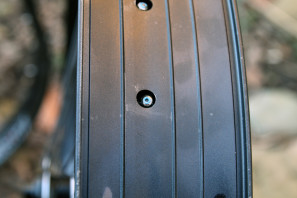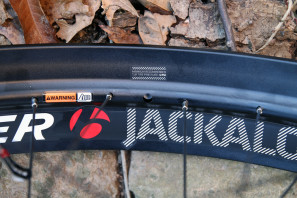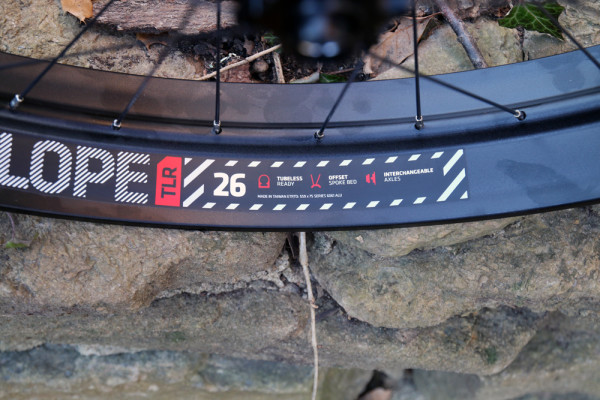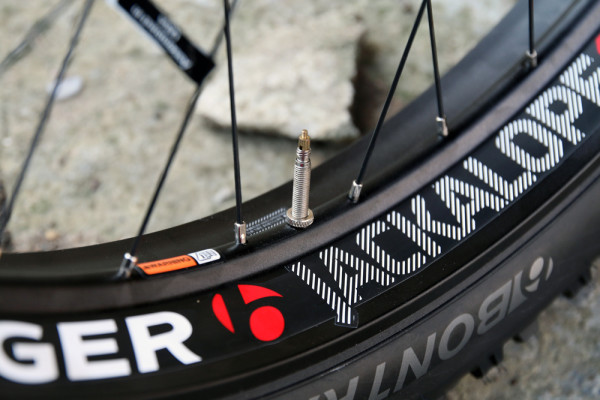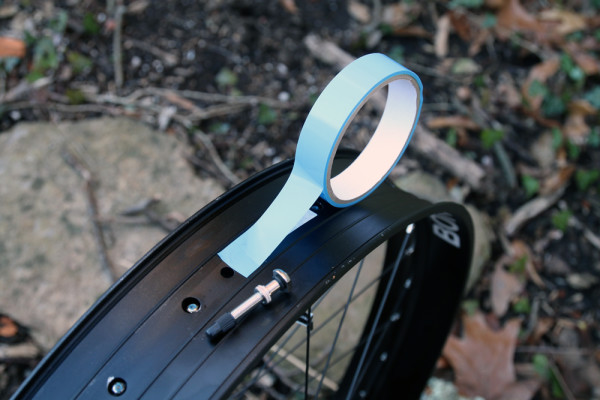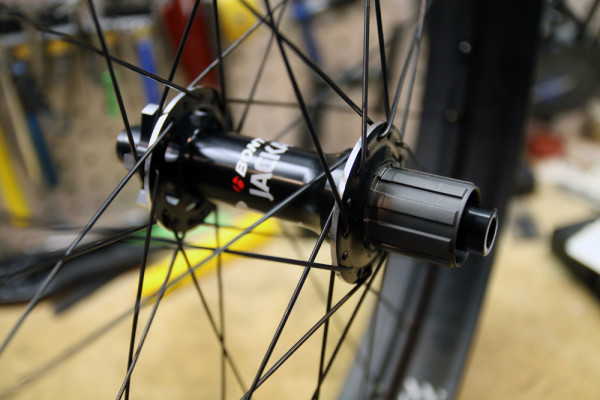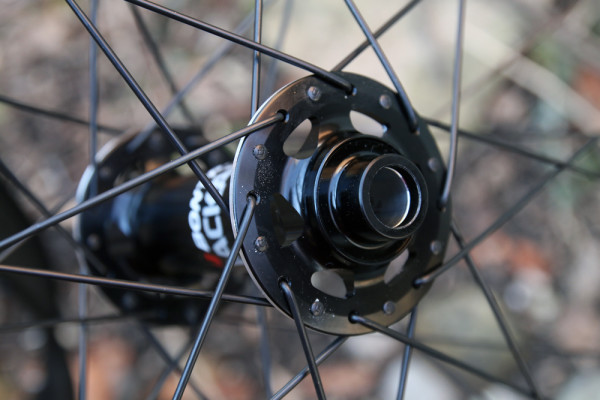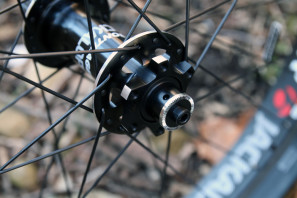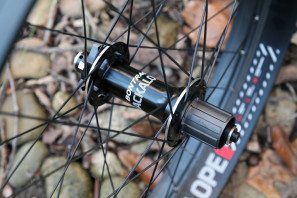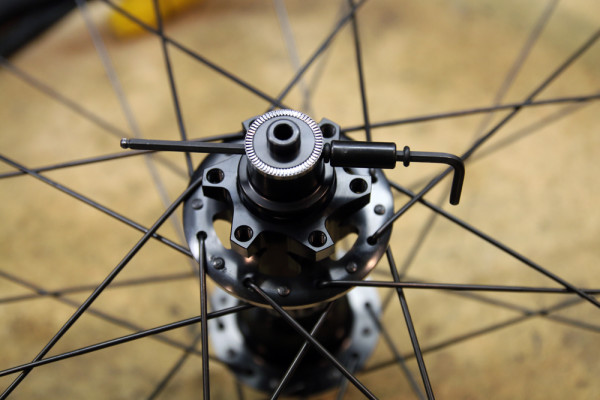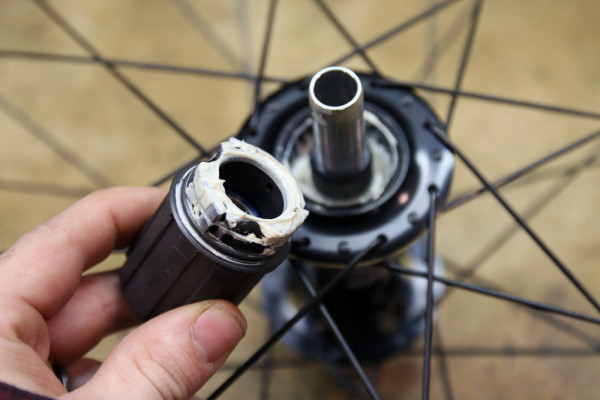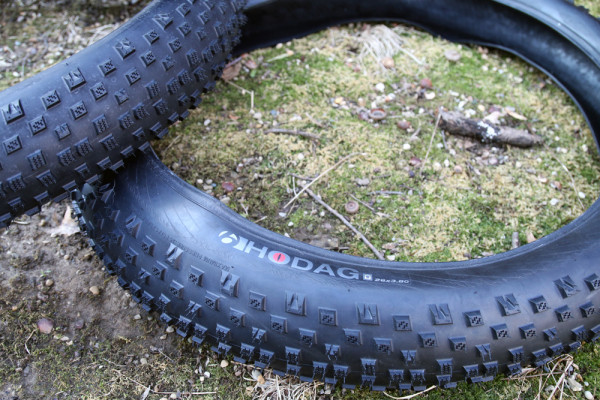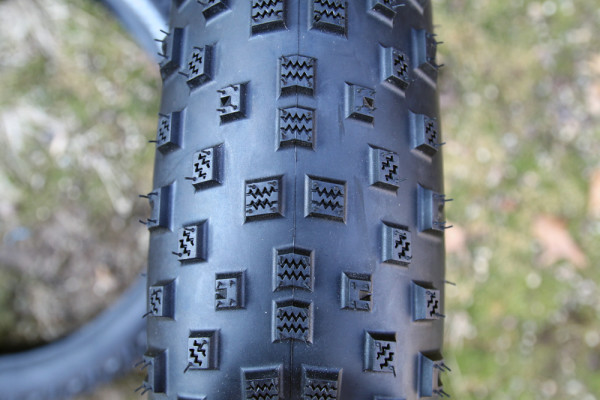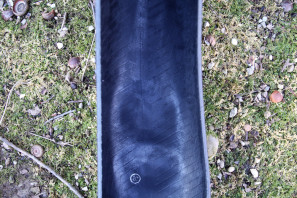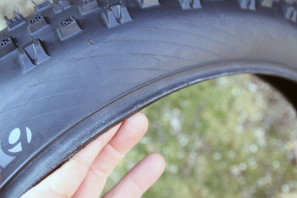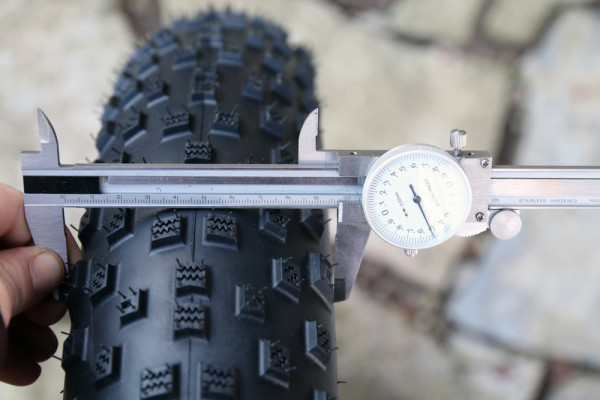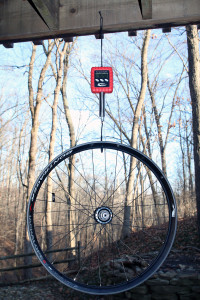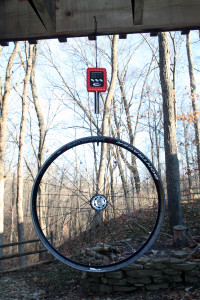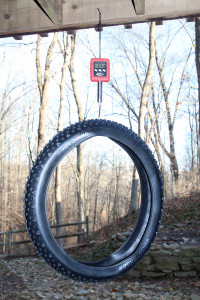Just like your typical mountain bike, when it comes to fat bikes tubeless tires have a lot to offer. Eliminating (or close to) flats is a pretty big deal, especially given the fact that your typical fat bike inner tube will usually run at least double the cost of a standard tube. In many circumstances, dropping the tubes will also result in a significant weight loss – sometimes more than a pound. In our experience, the lack of an inner tube has also resulted in a better handling that will conform to the trail for improved traction.
In spite of all the advantages, going tubeless on a fattie still presents some challenges. Getting a large volume of sealant into a floppy tire and still being able to get that tire to seat on the rim can be tricky. That’s why products like Bontrager’s new fat bike TLR system get us excited. There are a number of tubeless systems available already from HED, Foundry/45NRTH, Turnagain, Sun Ringle, and more, but options are always good for the consumer. And while there are more than a few rims available, the choices for true tubeless fat bike tires are still fairly limited.
Like a lot of the big brands, Trek and Bontrager aren’t putting forth a huge product line for fat bikes, but what they do have looks promising. Get the details on the new Bontrager Jackalope wheels and Hodag fat bike tires next…
We’ve heard of the mythical creature known as the Jackalope (a jack rabbit with antelope or deer antlers), but weren’t quite sure why the name was chosen for Bontrager’s wheels until we looked it up. According to folk lore one of the ways you can catch a Jackalope is by leaving out a bottle of whiskey. Add that to the fact that they supposedly only breed during winter electrical storms, and we’re thinking the name is spot on.
As Bontrager’s first fat bike wheelset, the company is liking testing the waters with a single model that features an 80mm wide (75mm internal) 6061 aluminum rim. The welded design features a stiffening double wall channel that is offset to one side of the rim. The idea being that the design allows for more even spoke tension with less dish without giving up stiffness at the rim. Each wheel uses 32 double butted 14/15 spokes that are threaded to the rim using locking nipples.
At first we were curious what the OSB and offset valve hole would mean for running tubes, but we were able to mount up a tire with a tube without issue. Most of us will be running these tubeless, but the ability to throw a tube in during an emergency is a necessary feature.
While the wheels carry the TLR moniker, this is one of the first Bontrager TLR rims that we know of that doesn’t use one of the plastic rim strips that snap into place. Instead, the wheels include a roll of fairly standard looking tubeless rim tape. The tape is installed only in the channel that holds the spokes and valve stem, and should be applied in two one layer (according to Bontrager, only one layer is needed but extra tape is provided). After making a hole for the valve with an awl the TLR valve is installed and you’re off to the races.
At the center of the wheels you’ll find Bontrager’s own hubs that are available in two combinations – 170/177 with a 135mm front, or 170/177 with a 150mm front. The front hubs are not adaptable through the use of end caps, and there is no 190/197 option for the rear. Sure, we’d like to see an adaptable version of the 135mm hub in case that user upgrades to a suspension fork in the future, but we’re happy to see the 150mm specific hub. Adding 15mm to the spacing of a hub through the use of a spacer on one side of the axle and dishing the wheel over works, but you can definitely feel through the front end of the bike that it’s not ideal.
And for those of you out there with 190/197 bikes? When asked about 190/197 hubs down the road we were told “they are always working on things” but more importantly, that Jackalope rims are available as replacement parts through Trek dealers. So technically there is nothing stopping you from buying a rim and your own 190/197 hub and building a wheel short of figuring out the spoke length.
Otherwise the included hubs are compatible with 135 QR/142 front and 150×15 front as well as the QR or TA rear with Shimano or SRAM XD freehub bodies available.
Any mechanic who has ever struggled with removing press fit end caps from a hub will surely appreciate Bontrager’s new touch to the end caps. Instead of having to muscle off the end cap with brute strength, a hole is drilled through each side that allows an allen wrench or similar tool to be used for leverage.
Inside the rear hub you’ll find a standard 3 pawl freehub with a 24t engagement ring.
If the Jackalope reference required a bit of clarification, the Hodag should need no introduction, especially if you’re from Trek’s home of Wisconsin. As the official symbol of Rhinelander, Wisconsin, the Hodag is another mythical creature known for its razor sharp claws. Fitting then, that it should be the name of a fat bike tire designed to claw into snow, ice, mud, and sand.
Given the heft of most fat bike tires, aggressive tread can be one of the first things to go when trying to make a lightweight tire. Fortunately, the Hodag keeps a meaty tread with widely spaced square lugs and plenty of siping on the blocks that provide extra gripping edges. The center knobs are still fairly close together for low rolling resistance, and the 3.8″ tire has a fairly round profile when inflated.
Inside, along with the TLR bead, the Hodag uses Bontrager’s Inner Strength casing that provides a degree of sidewall protection in hopes of keeping the tire as supple as possible. Currently available in only a 60 tpi casing, the tire uses a folding aramid bead and soft 60a rubber compound for grip. Fully inflated at 10 psi, the tires measure in at 3.838″ or just over 97.5mm, so it seems they run true to size.
On the first go we were able to seat the tire on the rim with about 80 ml of Bontrager sealant using their Flash Charger floor pump. Not bad.
The last question, how do they stack up in the weight department? The Hodag tires measured in at 1250g per tire which is just 6g over the claimed weight of 1244g. Not super light as far as fat bike tires go, but we would compare the Hodag most similarly to the 45NRTH Vanhelga which is over 100g heavier even with the 45NRTH running the higher end 120 tpi casing (though the Vanhelga has some monster tread).
Both of the wheels came in under claimed weight at 1540g for the rear and 1310g for the front (1552g and 1330g claimed. Wheels and tires are currently available through your local trek dealer with both front wheel models selling for $482.99 and the rear priced at $516.99 making the price for a set $999.98. Hodag tires run $149.99 a piece.
